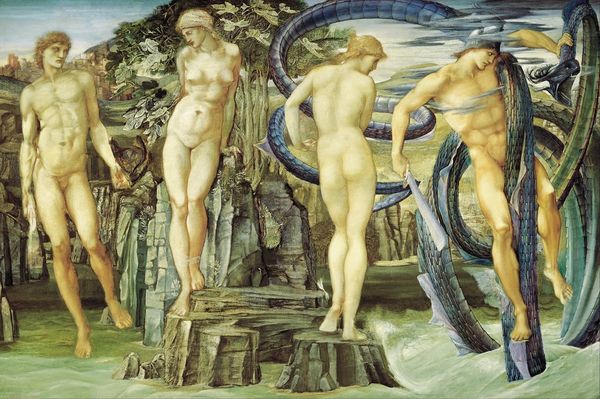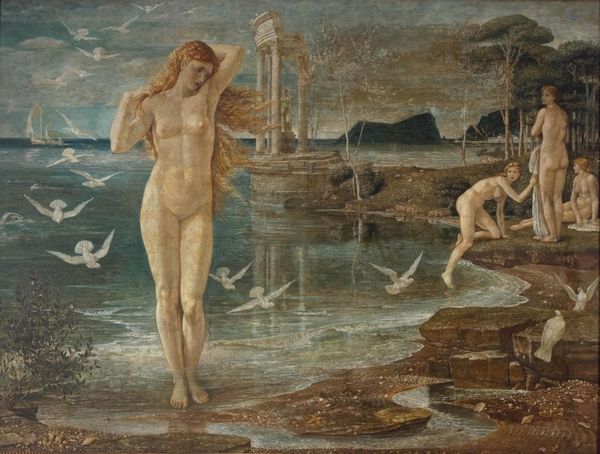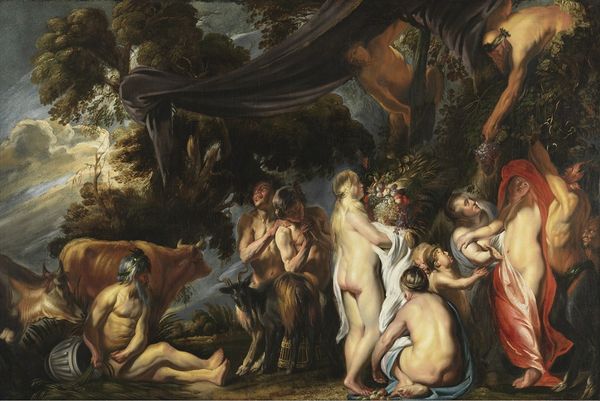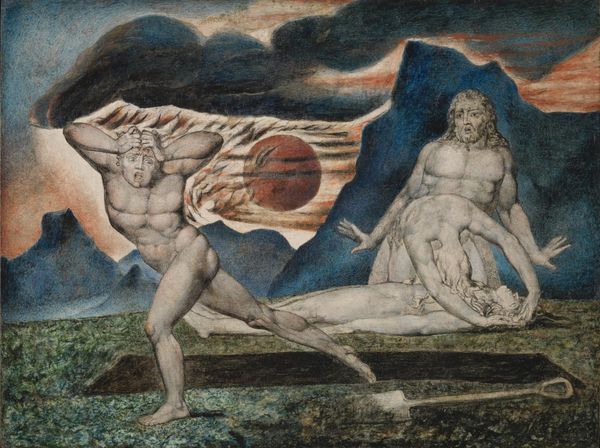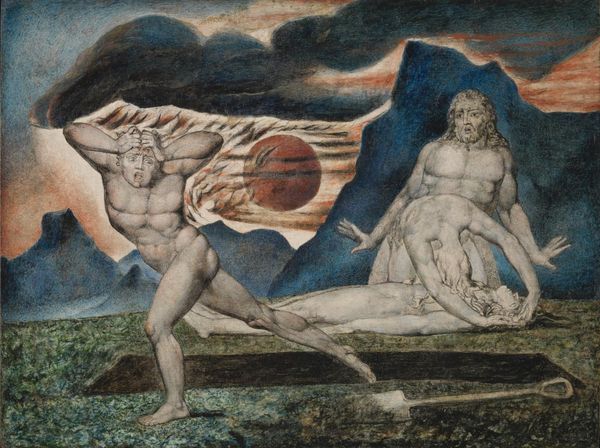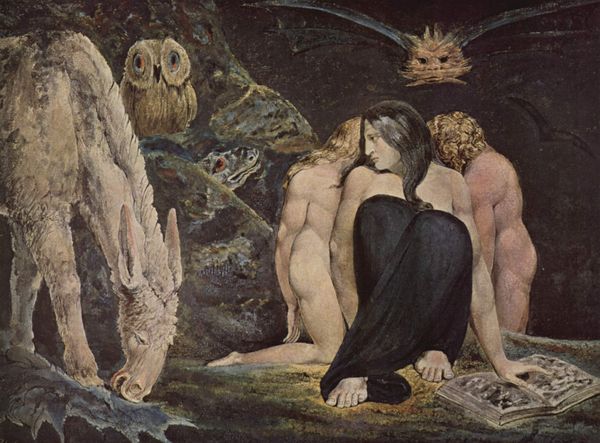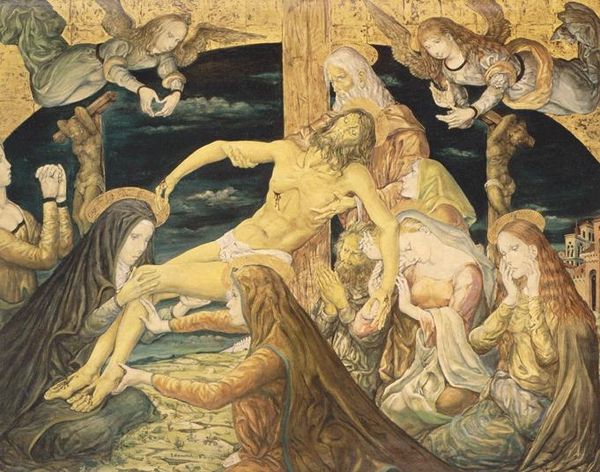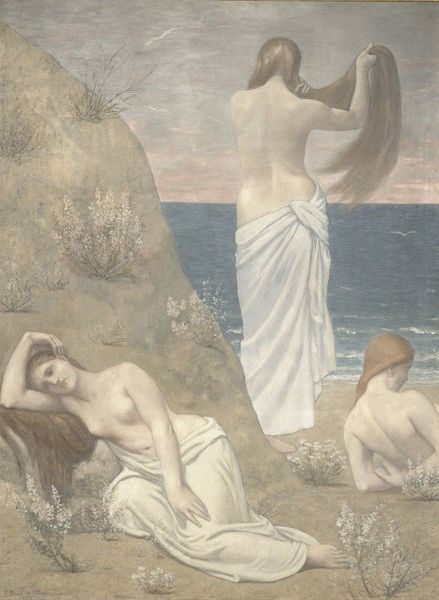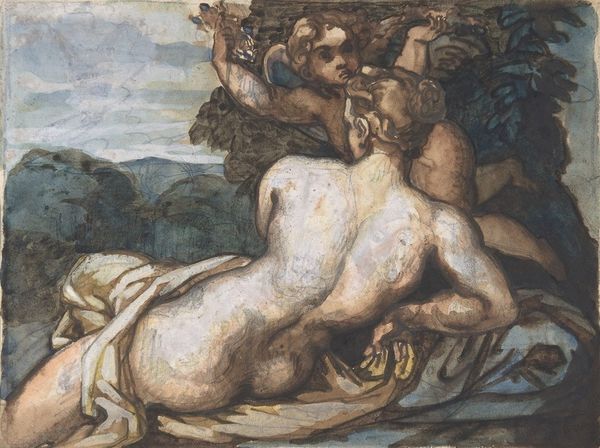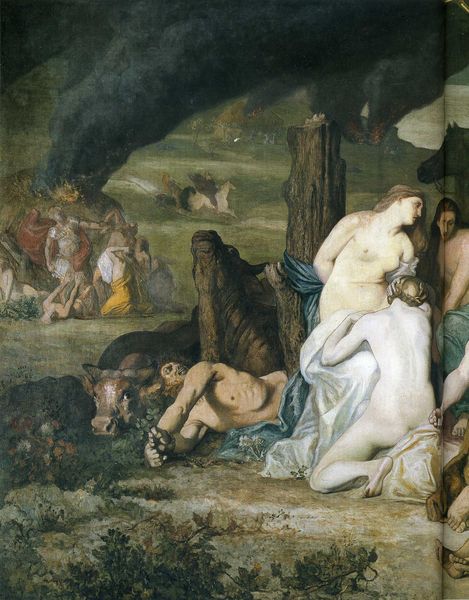
The Calling of Perseus 1898
0:00
0:00
siredwardcoleyburnejones
Staatsgalerie Stuttgart, Stuttgart, Germany
tempera, painting
#
narrative-art
#
tempera
#
painting
#
landscape
#
figuration
#
mythology
#
human
#
symbolism
#
pre-raphaelites
#
italian-renaissance
#
nude
#
male-nude
Dimensions: 152.4 x 127 cm
Copyright: Public domain
Curator: "The Calling of Perseus" created by Edward Burne-Jones in 1898 using tempera, illustrates a pivotal moment in the Greek myth. Editor: My initial impression is one of subdued drama. The muted color palette, combined with the almost mournful expressions, casts a shadow over the scene. It's somber, yet undeniably striking in its composition. Curator: Absolutely. Burne-Jones, deeply influenced by the Pre-Raphaelites, often explored themes of mythology through the lens of his own Victorian sensibilities. The tale of Perseus and Medusa takes on an allegorical quality here, resonating with Victorian ideals and anxieties around heroism, gender roles, and morality. The figure on the right holds a mirror, but how might we view this scene reflected through a feminist lens? Editor: Well, structurally, the figures are arranged with an almost deliberate asymmetry. Perseus is very muscular and dominates the scene. The lighting further isolates his physique. It serves to idealize form in an almost godlike portrayal, characteristic of Renaissance principles applied to this allegorical narrative. The composition adheres closely to classic concepts of the male hero. Curator: Perseus does reflect the traditionally celebrated idea of the heroic figure in many myths. Still, look at the composition of the scene as a whole: to me, he seems frozen and unsure while facing destiny. Considering the artist, what is this composition communicating to a contemporary viewer? Is Perseus celebrated here, or scrutinized? Editor: From a purely formal perspective, the use of tempera contributes to the painting's soft, almost dreamlike quality, which, combined with its delicate detailing, adds to its ethereal beauty. Curator: Consider what lies beneath this beauty, though. We could ask, how does this rendering perpetuate or challenge perceptions of power, agency, and female identity that this mythological scene already conveys, or reinforce male dominance. Even if the beauty is hard to resist... Editor: I see your point. Reflecting on it now, perhaps the visual tension lies precisely in this contrast, the beauty and the darkness creating something truly memorable and haunting, and in some ways ahead of its time.
Comments
No comments
Be the first to comment and join the conversation on the ultimate creative platform.
